Partnering with ABILITYusa to implement Injury Prevention services and testing can decrease the number and severity of injuries experienced.
Reduce Total Injuries Year After Year:
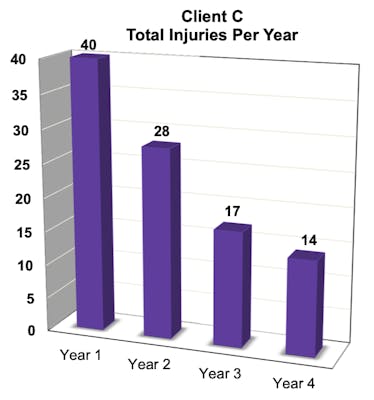
Injury prevention services not only decrease injury incidence, but positively impact many other operational metrics.
A healthier, injury-free workforce promotes a higher level of employee satisfaction and retention, and thus, cost reductions and an organization’s overall operational and fiscal success.

Total Paid
In a Multi-State organization, similar sized facilities in different geographical regions with similar sizee or identical service and physical task demands, had vast differences in injury experience. There were significant decreased levels of injuries and costs in facilities that incorporated [ABILITYusa] Injury Prevention services and testing.
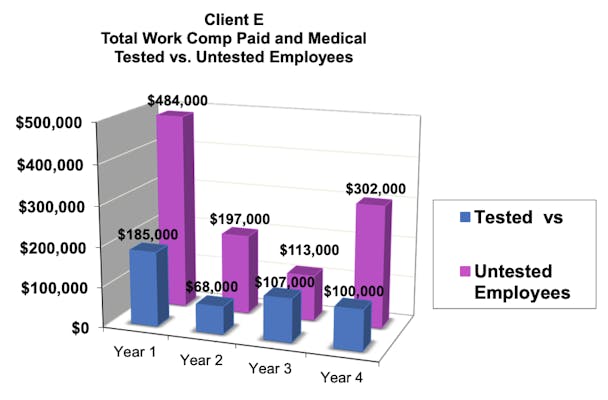
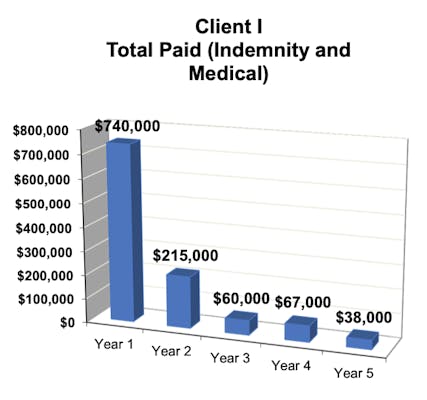
The above two graphs only reflect the direct cost of injuries per year. The indirect costs of injuries are not included. If all indirect costs were captured, the total cost of an injury could increase by up to 10 times the direct cost (Per U.S. Bureau of Labor Statistics).
Lost Days
Lost days occur when employees are away from their regularly scheduled and assigned work duties due to injury or illness. [ABILITYusa] Injury Prevention services and testing help reduce lost days by: preventing injuries; reducing severity of injuries; and by objectively identifying temporary modifications to keep the employee working. Appropriate work is therapeutic.
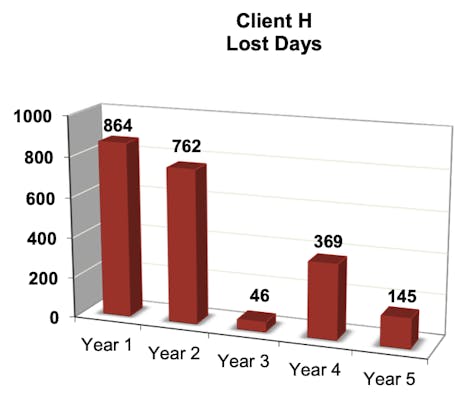
Lost days are one contributor to indirect costs, as deviations to standard operations are required. A few of these include: Overtime to cover missed shifts, training someone to perform the injured person’s job, decreased productivity, redirecting manager’s time and focus, some staff must work harder. There are untold other operational inefficiencies. Lost days also impact general employee morale, increased absenteeism related to fatigue, and ultimately increased turnover.
Injury Prevention focused analysis, testing and training achieves a reduction in turnover, as, over time. More physically capable staff join the ranks, who are not at risk of injury.
There is higher turnover among staff who find the physical requirements to be too difficult.
Onboarding costs are decreased with a reduction in turnover.
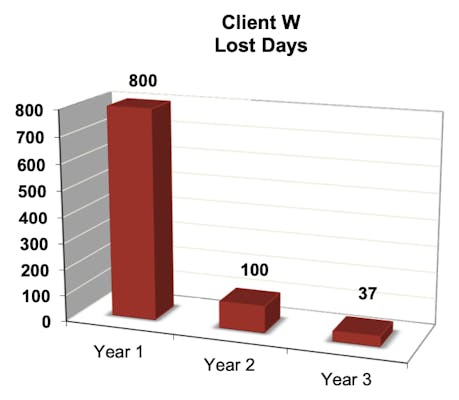
EXPERIENCE MODIFICATION
Every Employer Wants To
DECREASE their X-Mod
Q
What is X-Mod?
A
Experience Modification (X-Mod) is reported as a rate used by the US insurance industry to adjust an employer’s workers’ compensation insurance premiums. These are based on the employer’s pre-existing claims history, typically a rolling three-year history. The rate may adjust an employer’s workers’ compensation insurance premiums.
Ratings are based on past costs and projected future costs. In addition, individual companies are compared to others of the same business type. The average rating for a class is (1.00). Premiums are higher or lower, based on the employer’s number of injuries and cost of claims in the past.
Q
What is the Employers’ GOAL?
A
TO: progressively minimize the number and cost of claims going forward, in order to decrease insurance premiums.
The experience modification graph below demonstrates the results of proactive injury prevention activities achieved in coordination with ABILITYusa working with a broad variety of organizations including the case example listed here.
DO THE MATH:
Partner with [ABILITYusa] to
DECREASE YOUR X-Mod
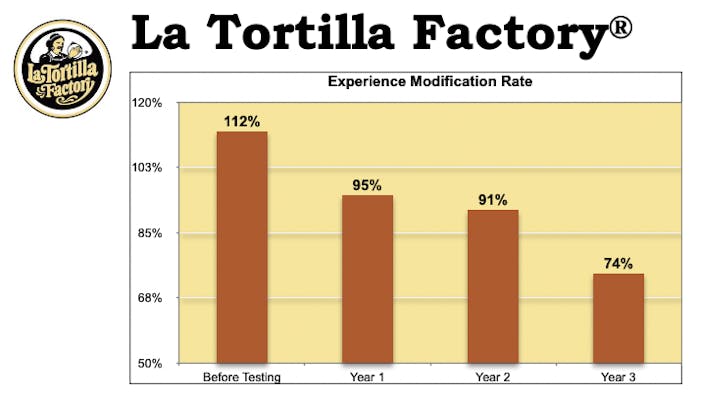
- La Tortilla Factory® has been able to achieve breakthrough results in creating a safety culture, with the help of [ABILITYusa] programs.
- X-mod has decreased progressively through the years.

PREVENTING EVEN ONE (1) INJURY PAYS DIVIDENDS:
- Pays for the cost of Injury Prevention Testing & Consulting Services for many months, or more!
- Adds thousands to an organization’s bottom line;
- Increases the number of Happy, Healthy Injury Free Employees;
- Rapidly reflects savings in both direct and indirect costs;
- Per the Bureau of Labor Statistics (BLS), indirect costs associated with an injury may be 1 to 10 times greater than direct costs.
- Ultimately decreases Insurance Premiums;
Do the math: with 5% - 15% of the work force at risk for injury due to their functional deficits, the prevention of even 1 (one) injury protects the individual and decreases both direct and indirect costs.
Over time, injury prevention decreases the number of staff injuries and enhances an organization’s Experience Modification, in order to decrease insurance premiums.
